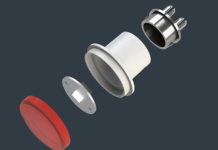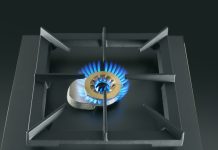They are the concrete contact point between the technology contained in a household appliance and the user of this technology. Interfaces are constantly evolving just due to this reason, being connected with the changes of users, of their requirements and of the other devices with which they interact.

Talking about interfaces for the household appliance of the next future means to carry out an analysis of what is happening not only in the specific productive sector but also and especially in the connections with the other production sectors of consumer goods. Youth’s and less young people’s way of interacting in their daily life with smartphones and tablets unavoidably influences what we pursue and expect from other household appliances: touch screens, intuitive controls and high interactivity. The “time” factor has a certain weight, too. Consumers, “pampered” by devices with increasingly sophisticated functions but simpler and simpler use modalities, are no longer willing to browse long instruction manuals or learn complex tutorials. They already expect “to know” how their device works.
The standardization matter is as interesting. The use of standard codes, codified and shared by all models and brands, should simplify users’ life and overcome democratically linguistic and cultural barriers. If the spin-dryer of the washing machine is represented by a “universal” icon, users are not requested to know a specific language, even a child who cannot read, yet, might understand it.
Pressing, turning and lifting
Until the Eighties, household appliances had an interface based on electromechanical devices: knobs, rotary selectors, pushbuttons, lever switches as well as on/off warnings. The operation of these elements, then, is so “interiorized” that it does not show any difficulty, at least apparently. When using buttons, we must press the pushbutton to start an action, the button remains pressed until when the action is in progress, afterwards, at the end of the process, the pushbutton recovers its original position. Simple system, but still with improvement margins: pushbuttons must have the right sizes and the correct distance one another and they must be positioned in the most functional sequence for users, rather than in the most attractive from the aesthetical point of view, maybe grouping similar functions in a single zone. Even better if also a clearly visible light signal unequivocally communicates whether the command has been implemented correctly.

The same is valid for knobs: their rotation is universally associated to the meaning of variation of a parameter and in particular of “increase” in the sense of clockwise rotation and of “decrease” when the rotation is anticlockwise; analogously, in the clock the clockwise sense means “forwards” while its contrary has the meaning of “backwards”. Similarly, a value rise on Cartesian axes is deemed increasing if we proceed from left to right, decreasing in the opposite direction: in this case, our reference is writing, which proceeds (at least in Western Countries) from left to right.
Concerning light warnings, there are unwritten but universally acknowledged rules: red identifies an “ON” state or an alarm situation, green is used for a regular operation, yellow for standby situations, the flashing for critical situations calling for the user’s intervention.
All this system of intuitive associations remained the only reference until the Eighties, when new inputs came from other application ambits.
PC come!
The first contamination in household appliance interfaces comes with the advent of remotely controlled TV sets and then of their remote controls. Numerical keyboard for the selection of channels, pushbuttons with + and – to adjust the volume, brightness and contrast: they are the first innovative elements that make users accustomed to reasoning with other parameters that are no longer the standard ones for them. The revolution is close and summarized in the PC acronym. Personal computers teach a completely new language, made of windows, drop-down menus and icons that can be physically dragged. Familiar and simple words hide complex functions, and the challenge between Windows and Apple is played (apart from sophisticated marketing reasoning that surpasses the product limits to encompass the brand) on the intuitiveness of controls, too. This language gradually becomes integral part of the device use logics and the selection of functions made through these codes is no more mysterious.

The third protagonist of this revolution is it, the portable phone. Not smartphone, yet, but already beyond the landline, it has promoted a further progress in the definition of the interaction interface between individuals and technological systems. In this device are synthesized all possible interaction modalities, from optical to acoustic ones, from the use of physical or virtual keyboards to the use of icons, up to the “touch” interaction modality through a pressure localized on the display or a directional grazing of the same. Besides, the tool diffusion is so planetary as to knock down any use hindrance. Even more, as mentioned before, to the extent of conveying the sensation that the portable phone interface is the simplest and then the one that everybody expects to find in electronic devices, too. This is true especially for the touch screen, less for the vocal technology, which has never collected a definitive success. A parallel course to interfaces’ in the automotive world: also in this case vocal controls were experimented but they finally opted for highly basic light signals or acoustic controls.
Smart household appliances …must communicate smartly
Thanks to the advent of smart household appliances, able to monitor a growing quantity of parameters for a more and more reasoned use, the interface matter has become even more engaging. They increase the information that the tool must share with the user to allow him to optimize the household appliance exploitation but this sharing must be clearly developed, very often using anyway the narrow spaces of the dashboard of a washing machine or the edge of a hob. In most cases, still due to reasons of similarity and acquaintance with consumer electronics, the interface is a touch screen. Also in this case, anyway, marketing reasons should not obscure common sense ones. If the design is certainly cleaner and more minimal if the fire power is managed by a touch screen, it is also easily presumable that the hands that will manage controls will not be always perfectly clean, just because involved in the food preparation. The readability matter is not secondary: too many information, compulsorily written with small letters, complicate the reading for visually impaired people. Few information, unequivocal and clear, are better.

The future, framed by endless scenarios
Over the last few years futuristic visions have often regarded household appliances, some real and others less, mainly connected with the possibility of making household appliances dialogue one another but also linked with possibilities not pertaining to functions in the strict sense but to playful aspects made possible by the interface technology.
Some years ago the Swedish Ikea had presented its idea of kitchen of the future, Skarp, intelligent and technological, real “summa” of available interface technologies, and not only. Banned the old pushbuttons, replaced by vocal controls and by the irremissible touch screens; the refrigerator has an interactive holographic display in 3D; a chef (still in the hologram form) helps in the preparation of tasty dinners. And food? Created, starting from raw materials, by 3D printers.
It unambiguously winks at the table versatility also the concept of the hob devised by Whirlpool and presented last year. Connected with Internet, it allows visualizing recipes and, depending on the pot position, it heats to permit the dish cooking. Moreover: it becomes a real terminal for the home management, checking what are the ingredients stored in the refrigerator and, according to this piece of information, it suggests the right recipes for lunch and dinner.
While the kitchen is going to challenge the other environments to gain the role of most technological room in the house, the other appliances are doing their part.

“User- friendly like a smartphone” is the statement with which Samsung summarizes the concept at the base of the washer Series 9000 Crystal Blue: the LCD colour display, fully touch screen, replaces knobs and pushbuttons to allow managing all parameters from a single screen, from the tissue to the temperature selection, from the spin-dryer speed to the detergent type. Besides, it can be naturally managed remotely, thanks to the creation of a dedicated app. A trend that nowadays seems more and more within everybody’s reach.




